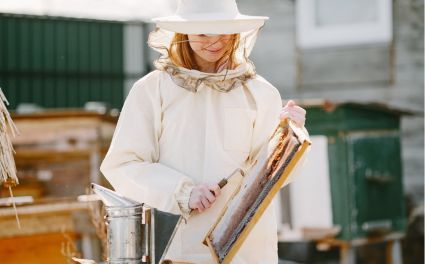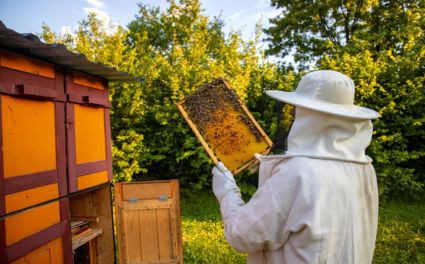When it comes to beekeeping, few pieces of equipment are as important as bee frames. They’re the backbone of every hive, giving bees the structure they need to build comb, raise brood, and store honey. Choosing the right beehive frames can make your beekeeping journey smoother, more productive, and even more enjoyable.
But with so many options—wooden bee frames, plastic bee frames, deep bee frames, foundation vs foundationless frames—it can feel overwhelming. In this guide, we’ll break down the top 10 bee frames every beekeeper should consider, along with tips on how to choose the best ones for your apiary.
Why Bee Frames Matter in Beekeeping
Bee frames are more than just pieces of wood or plastic. They play a direct role in:
-
Brood rearing: Frames give the queen space to lay eggs and workers to raise new bees.
-
Honey storage: Organized frames mean easier inspections and simpler honey harvesting.
-
Hive health: Clean, durable frames prevent disease spread and reduce stress on the colony.
Whether you’re using foundation bee frames (with a pre-set base for comb) or foundationless bee frames (for natural comb building), the choice you make impacts both hive productivity and your workload as a beekeeper.
And remember—good beekeeping isn’t just about equipment. It’s also about safety. Wearing protective gear such as beekeeping jackets, beekeeping gloves, and beekeeping veils ensures you can inspect your bee frames with confidence.

Top 10 Bee Frames for Beekeepers
Here are the most popular and practical bee frames to consider for your hives.
1. Wooden Bee Frames
A favorite among traditional beekeepers, wooden bee frames are durable, customizable, and easy to repair. They work well in both brood boxes and honey supers. Many beekeepers prefer wood because it feels more natural for the bees, especially when paired with wax foundation.
2. Plastic Bee Frames
Plastic bee frames are gaining popularity for their strength and long life. They resist warping, don’t crack easily, and stand up to heavy honey extraction. Using wax-coated plastic frames helps bees accept them faster.
3. Deep Bee Frames (Full Depth)
Deep bee frames are the standard for brood chambers. Their larger size gives the queen plenty of space to lay eggs and ensures colonies grow strong. They can be heavy when filled with honey, so protective clothing like beekeeping suits or beekeeping trousers is recommended when handling large hives.
4. Medium Bee Frames
Lighter and easier to handle, medium bee frames are versatile and popular with beginners. They’re often used in honey supers since they’re less strenuous to lift during harvesting.
5. Foundation Bee Frames (Wax or Plastic)
Foundation bee frames come with a built-in guide—either wax-coated or plastic—to help bees draw straight comb. This speeds up comb production and reduces cross-comb issues. They’re ideal for new beekeepers.
6. Foundationless Bee Frames
For natural or organic beekeeping, foundationless bee frames are the go-to option. They allow bees to build comb entirely on their own, just like in the wild. This is great for natural cell size and reducing chemical exposure, though it requires careful handling.
7. Assembled Bee Frames
Assembled bee frames arrive ready to place directly into the hive—no hammer, nails, or wiring needed. They’re perfect for busy beekeepers or beginners who don’t want the hassle of building frames.
8. Unassembled Bee Frames
If you enjoy DIY or want to save money, unassembled bee frames are a solid choice. They usually come in bulk and require some time to put together, but they’re cost-effective for large apiaries.
9. Wax-Coated Plastic Frames
Combining the best of both worlds, wax-coated bee frames are plastic frames with a thin coating of natural beeswax. This makes them more attractive to bees and reduces the issue of rejection.
10. Heavy-Duty Durable Frames
Commercial or large-scale beekeepers often choose heavy-duty bee frames. Designed for repeated use, they withstand extraction cycles, transport, and seasonal stress.
If you’re running multiple colonies or teaching younger ones about beekeeping, pairing these frames with beekeeping kids suits and beekeeping ankle protection is a smart way to keep the whole family safe while working with bees.

Factors to Consider When Choosing Bee Frames
Not every beekeeper needs the same type of frame. Think about:
-
Hive size and style: Deep vs medium frames.
-
Material: Wood vs plastic frames.
-
Experience level: Foundation frames for beginners vs foundationless frames for natural beekeepers.
-
Budget & convenience: Assembled vs unassembled.
Tips for Bee Frame Maintenance
Even the best frames need care. Follow these tips for longer-lasting beehive frames:
-
Rotate old frames every 3–5 years to prevent disease buildup.
-
Scrape off burr comb and propolis regularly.
-
Freeze frames to stop wax moth infestations.
-
Store unused frames in dry, pest-free places.
And always suit up properly with gear from trusted suppliers like OZ Armour to make inspections safe and stress-free.
Conclusion
Choosing the right bee frames can transform your beekeeping experience. From wooden bee frames to wax-coated plastic frames, there’s a type to match every beekeeper’s style. Pairing the right frames with protective gear like jackets, gloves, and suits not only improves efficiency but also keeps you safe during hive checks.
Want to learn more? Read more blogs about beekeeping and explore high-quality protective gear from OZ Armour, including jackets, suits, gloves, veils, trousers, kids’ suits, and ankle protection.












